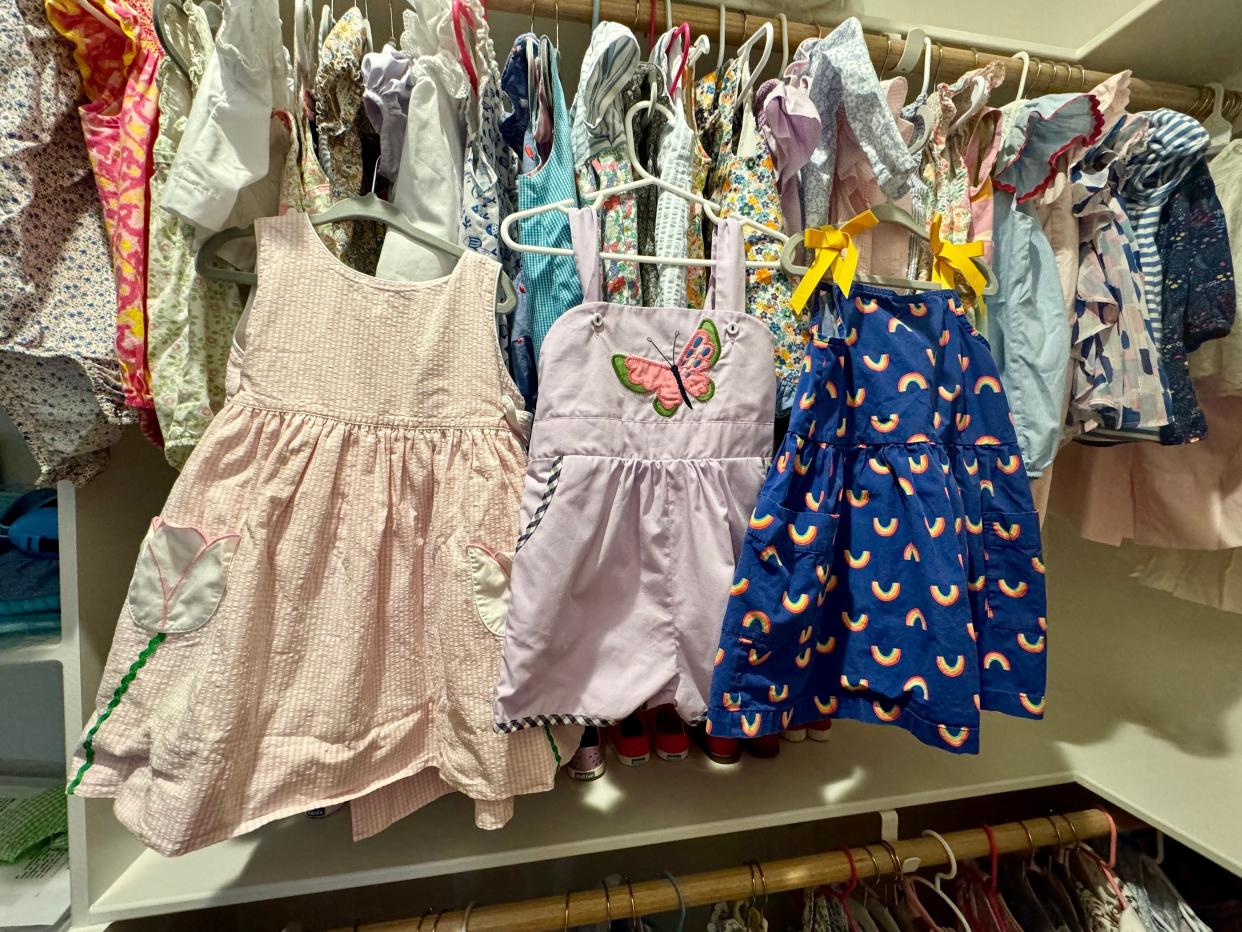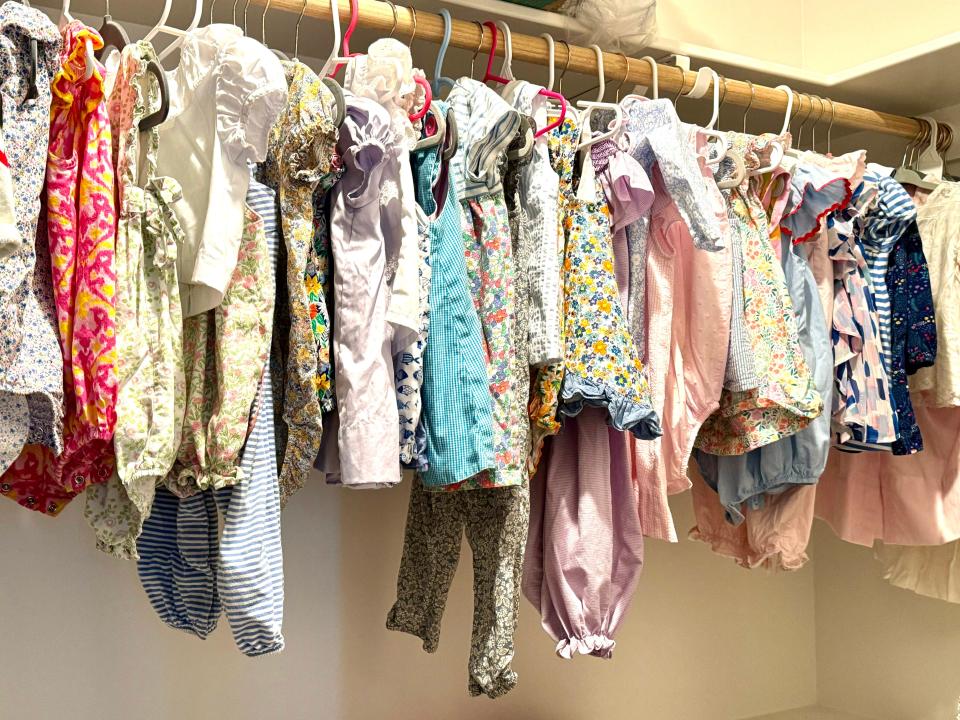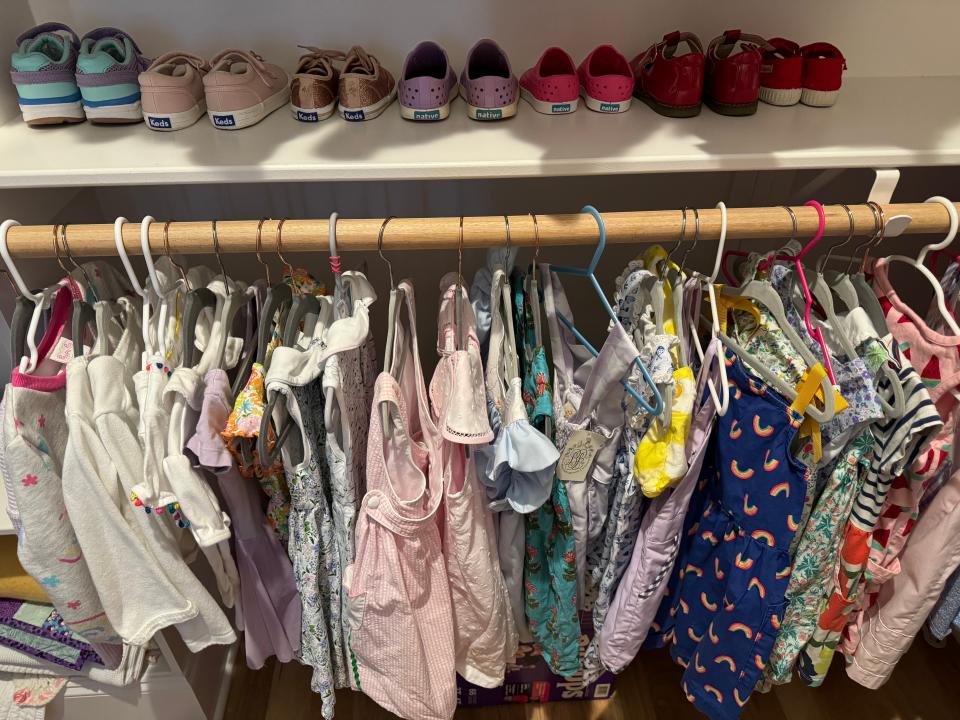I buy most of my kids' clothes secondhand and then resell them. Here are 4 tips for kids' consignment success.

I buy almost all my kids' clothing secondhand.
Buying and selling takes time and energy, but saving a significant amount of money is worth it.
Here are my tips for having success on the kids' resale market.
Kids grow like weeds, and there's a short window of time for them to wear each clothing size.
I'm picky about what my girls wear, but I would not be able to afford the brands and styles that I wanted to dress them in if I bought their clothes brand new. I also don't feel great about buying brand-new when I know they'll wear each item for such a short amount of time.
Instead, I scour the internet and local consignment sales to find clothes secondhand and then resell them after they're done wearing them. It saves me money and is a more sustainable option as well.
Here are four tips for kids' consignment success.
I buy online and at consignment sales
Kidizen is the kids' equivalent of the popular consignment site Poshmark. I use it for buying as it's easy to filter by brand, size, and item quality, and shipping is fairly inexpensive.
There are also great local consignment sales where I live in Raleigh, North Carolina, many of which happen twice a year (in early fall and early spring). They're great for buying many items at once and for building out my kids' closet for the upcoming season. These sales are typically only a few days long, and on the last day, items are usually reduced even further for mega deals.
Chances are there are similar sales or consignment stores specifically for kids in your area. If you're not familiar with any, ask your local parenting group or do a quick Google search to find them.
Facebook is also a great place to buy kids' clothes. To make it easier to find what you want, look for specific Buy/Sell/Trade (BST) groups for brands you love, like the popular Mini Boden & Hanna Andersson BST group (which has over 60,000 members!). You can also search the Facebook Marketplace by category or brand.

Here's how I sell secondhand clothing to make the most money
As a seller, you'll make different profit margins based on where you sell your clothes.
Kidizen takes 12% (plus an additional flat $.50 fee) of each sale, so I typically start by listing things on Facebook Marketplace or specialty BST groups because there are no fees when you make a sale. You'll also have to ship your item if you use Kidizen, but you can choose whether you pay the shipping fee or pass the fee along to the buyer. If you're using Facebook, you have the option of local buyers only or whether you want to ship.
If an item isn't selling on Facebook after a couple of weeks, I'll list it on Kidizen to reach a wider audience. Then, my last resort is selling through the local seasonal consignment sales because they can take up to 50% of the profit for each sale. They're a great way to sell a lot of things quickly, though, so I'll take whatever hasn't sold through other methods to these and then donate whatever is leftover at the end of the sale.
Certain brands have a higher resale value
The kid resale market is similar to the adult resale market. Higher-end brands have a better chance at reselling, and you're going to get more of your purchase price back when you resell them. Keep this in mind when you're buying (new or secondhand), as the ability to resell effectively brings your purchase price down since you're making back some of what you spent.
Mass-market brands like Old Navy and Carters are tougher to resell, and you'll likely only be able to recoup a small percentage of what you originally paid. Higher-end brands like Hanna Andersson, Mini Boden, and The Beaufort Bonnet Company have high resale values and often pass through several rounds of ownership.
When I buy an item from one of these brands secondhand, I can usually resell it for 70-80% of what I paid. Knowing this, it makes more sense to pay a bit extra for the higher-end brands.

It takes work and patience to buy and sell secondhand kids' clothing
Buying and selling kids' clothes is a marathon, not a sprint. Over time, I've made and saved hundreds of dollars selling my girls' clothes. It feels good to contribute to the circular economy by giving gently used clothes a new life, but it does take a lot of work.
Creating a listing to sell an item takes work. You'll need to take multiple pictures and write a description, and you might need to list the item in multiple places to make a sale. Keeping yourself organized is also important. You need space in your house to keep mailers and packing supplies to ship things and space to store the clothes you want to sell.
If you aren't making many sales, you may need to reconsider what brands you're listing, how you're pricing, or the quality of your photos. Have patience, but know that your time also has a cost, and over time, if you aren't selling, it may not be worth it.
On the buying side, you may not find things you love every time you try to shop. There is no way to tell what inventory might be available in the size and condition that you are looking for. Browse Kidizen and your favorite BST Facebook groups for a few minutes whenever you have time. If you find something you love, act quickly, as once the item is gone, there is no backup.
Kids' clothing is expensive, and they don't wear anything for long. It takes time and effort, but buying secondhand and reselling is a way to drastically reduce your spending.
Read the original article on Business Insider

